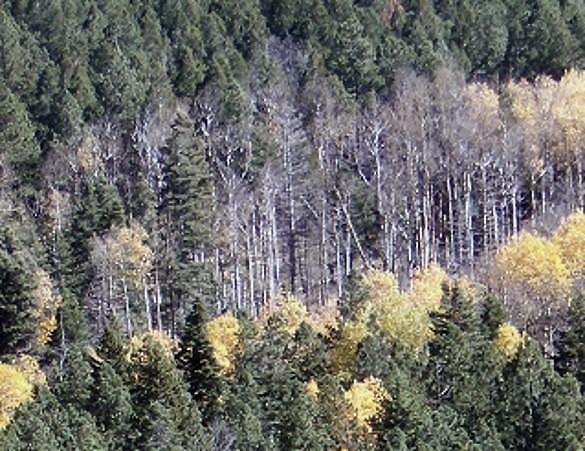 The autumn leaves have fallen in one grove. Photo Robert Dryja
The autumn leaves have fallen in one grove. Photo Robert Dryja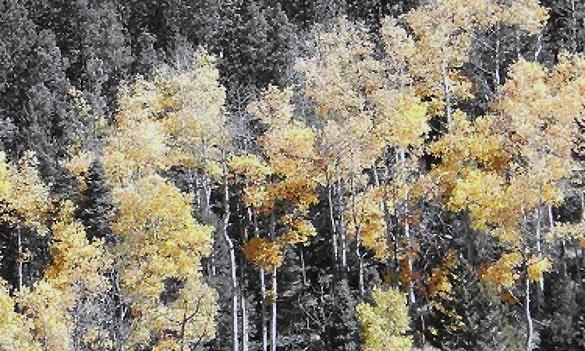 The leaves still remain in another grove a short distance away. Photo Robert Dryja
The leaves still remain in another grove a short distance away. Photo Robert Dryja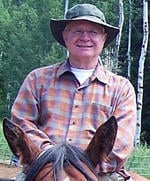 By ROBERT DRYJA
By ROBERT DRYJAAmateur Naturalist
All the leaves in a grove of aspen trees change color at the same time in the autumn. This is a result of all of the trees being part of the same clone. Aspen tree roots extend throughout an area, sending individual tree stems upward.
The trees appear to be separate when seen above ground but are interconnected below ground. The trees are called ramets. An individual tree may live 100 to 150 years but the network of roots may live several thousand years. One grove in Utah is estimated to be 80,000 years old. This puts the aspen groves seen around Los Alamos in a different perspective. How old are they? Perhaps hundreds or even thousands of years old.
The bark of an aspen tree is smooth. The dominate color is white but some green coloration can be seen. The bark is living since some photosynthesis occurs here in addition to the leaves, unlike most trees. This also means the bark is a source of food for plant eaters such as elk. An aspen tree may be covered with gashes and broken bark toward its based but clear higher up where it is out of reach for elk.
The trembling or quaking of aspen leaves in a breeze is a distinctive visual attribute in addition to the color of its leaves in the autumn. The trembling is a result of the shape of the stem, called a petiole, connecting a leaf to a branch. A petiole has a distinctively flat shape. One side is several times wider when compared to the other. The wide side of the petiole is vertical to the flat side of the leaf. A leaf therefore can more easily flex back and forth in one direction when a breeze pushes against it.
An aspen petiole is like a broad but thin board. A petiole can flex more easily around its thin dimension compared to its broad dimension.
The petiole is thin when looking down at the broad side of a leaf. It is much thicker when looking at a leaf from its side.
Why do petioles have this shape? Rather than receiving sunlight directly and continuously, a leaf now is exposed on a flickering basis. In turn, the leaf does not become as warm as might otherwise occur. However a counter argument can be made. The gain of sunlight and warmth on one side may be offset by the loss on the other side. The movement also exposes leaves to more carbon dioxide in the air and so more photosynthesis can occur. Another possibility is that insects cannot easily eat a leaf if it is moving.
But then why have other species of trees failed to follow this same evolutionary path for their leaves? Air pressure is less at high mountain elevations. Winter is colder and longer lasting compared to lower elevations. The intensity and spectrum of sunlight is different. These factors may work against other species of trees. Leaf petiole shape is not the only factor contributing to success.
The reverse applies to aspen. Aspen are well adapted to life in the high mountains but they do not grow at lower elevations. What may be advantages for life at a high elevation may become disadvantages at lower elevations.
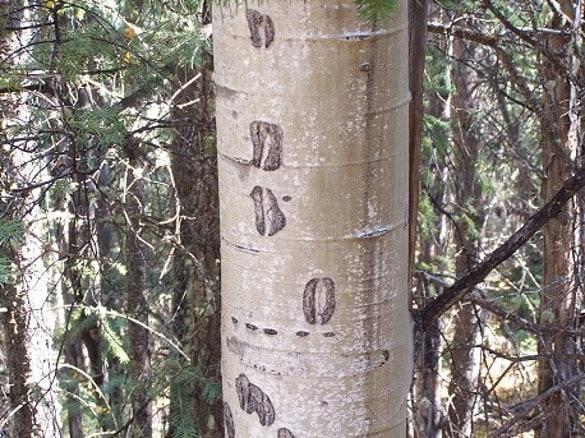 The parallel tooth cuts made by elk while eating the bark of an aspen tree. Photo Robert Dryja
The parallel tooth cuts made by elk while eating the bark of an aspen tree. Photo Robert Dryja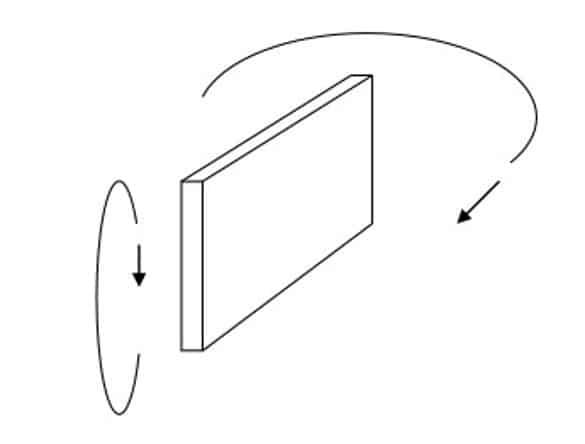 An aspen petiole is like a broad but thin board. A petiole can flex more easily around its thin dimension compared to its broad dimension. Photo Robert Dryja
An aspen petiole is like a broad but thin board. A petiole can flex more easily around its thin dimension compared to its broad dimension. Photo Robert Dryja The petiole is thin when looking down at the broad side of a leaf. It is much thicker when looking at a leaf from its side. Photo Robert Dryja
The petiole is thin when looking down at the broad side of a leaf. It is much thicker when looking at a leaf from its side. Photo Robert Dryja
